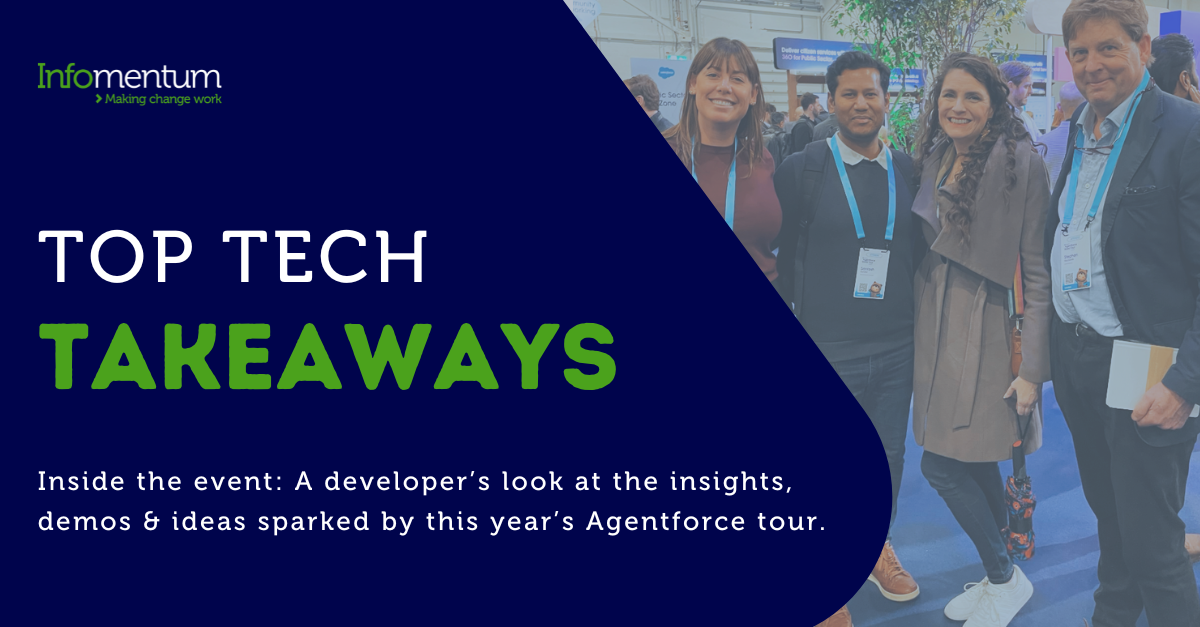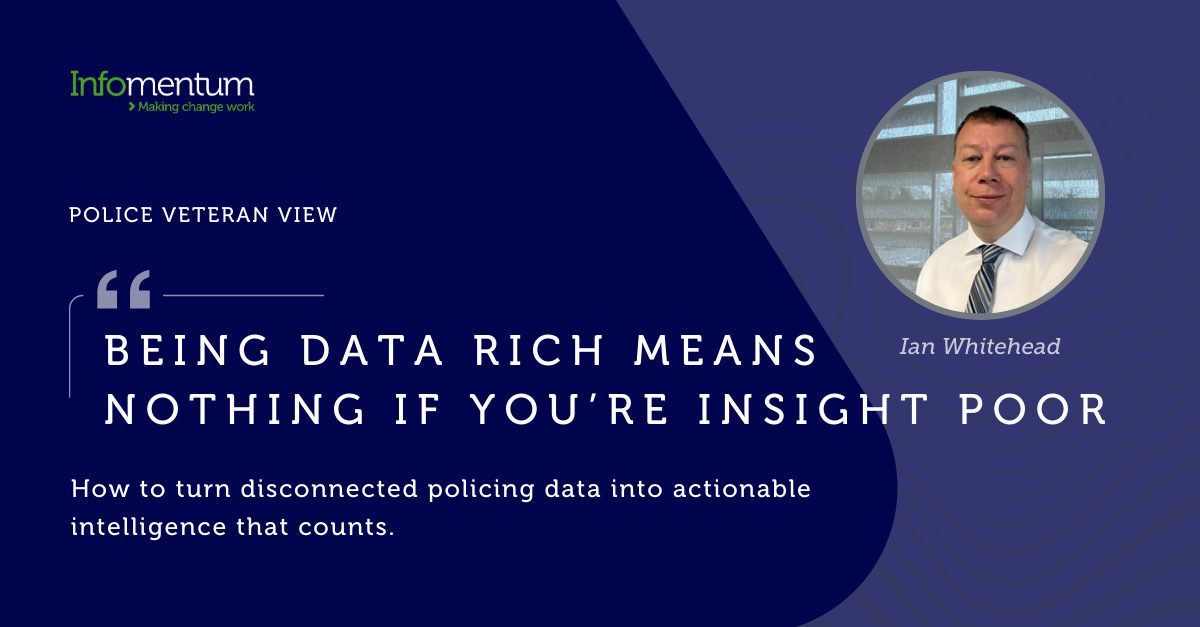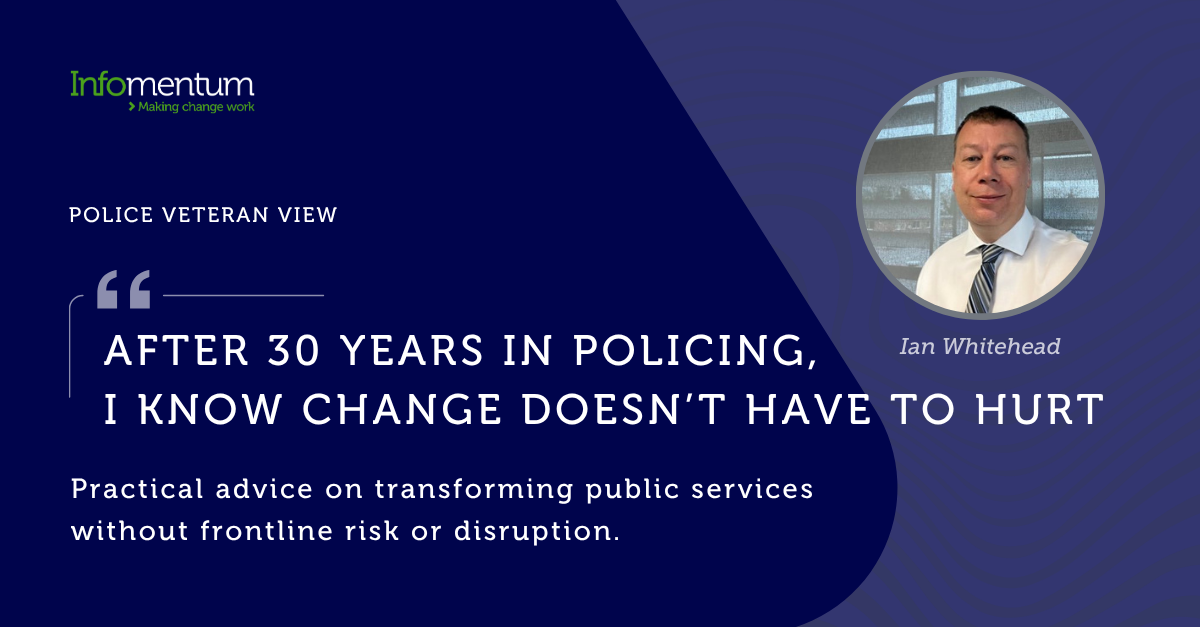Do you know what your customers need? Not what they want, or would like, but what they need. It is not always obvious. Faced with a complex mix of competing priorities and challenges, some companies may think they need one thing. In reality, however, they need something entirely different.
We always try to get to the heart of our customers’ objectives. Infomentum works with large enterprises that are wrestling with how to capitalise on the immense opportunities in their sectors and stay competitive. They know they need to digitalise, integrate and automate their systems, processes and people; the question is knowing where to start and how to proceed.
Today, we’re catching up with Alecia Ridout, our Head of Sales, who spends her days speaking to decision-makers, to hear what they’re are confronting.
What’s keeping CIOs awake at night?
 Alecia: I think there are four key challenges CIOs worry about. I mean issues that are above and beyond the day-to-day of keeping the lights on, managing cloud adoption, dealing with legacy issues, etc. These are the nuts and bolts, and they’re important, but they’re not the big picture.
Alecia: I think there are four key challenges CIOs worry about. I mean issues that are above and beyond the day-to-day of keeping the lights on, managing cloud adoption, dealing with legacy issues, etc. These are the nuts and bolts, and they’re important, but they’re not the big picture.
The more strategic problems CIO’s face are proving the value of their investments, implementing emerging technologies, getting the right skills into the business and cybersecurity.
Where do they have to prove value?
Alecia: I think there are two parts to this. The CIOs I speak to have to articulate the value of their decisions, not just commercially, but through cultural and behavioural change as well. At MuleSoft Connect 2019 Ben Turner, CTO at Legal & General, said: “I don’t talk about APIs. We talk about services the business wants to consume and try to find everyday scenarios to explain them.” I hear similar feedback also from other CIOs, when they get technical, non-IT people will switch off. To make the most impact you’ve got to make it relevant to them. How is it going to make their life easier?
Culture doesn't change overnight; you have to start small - identify one process, work out what you want to achieve, implement the technology, make a positive change. Suddenly you’ve got evidence that what you’re doing really works. It’s easier to get buy-in, both from boards and from employees, and then you can scale it across the rest of the business.
Many new programs or projects have a need for a new technology. To satisfy procurement requirements for those a lot of enterprises follow tender processes. These can exclude some project suppliers as they are slow and expensive to enter. As a result, customers aren’t always getting access to the solution that’s right for them.
To get around that, and to be able to move quickly and better prove value, CIOs need to be more progressive about procurement. For instance, having a way of scoring potential vendors to whittle down options. Then, once you’ve identified a shortlist, pilots or proofs of concepts can be run, and results collected. This procurement process is fast, but also structured and measurable. That way, CIOs can demonstrate its value by showing how the project has scored against deliverables.
Alecia talks about challenges faced by CIOs. The Automation and Process Mining in the Financial Sector event.
You also mentioned the challenge of emerging technologies? Are CIOs facing pressure to deploy over-hyped solutions from senior executives?
Alecia: I don’t think that’s the case. I have recently discussed the Robotic Process Automation (RPA) technology with one CIO, who said: “I understand what it (RPA) can do, I can see how it would benefit the business. I just don’t know where to start.” That’s the challenge.
My advice - just because the technology might be new, doesn’t mean the approach needs to be. It’s the same as the one I mentioned above - stop and think, pick a process, identify what you want to achieve, implement it, generate results quickly.
The next step is to scale it. At the MuleSoft event, Satish Maram, the director of API and integration at AstraZeneca, pointed out that while it was important to come up with a minimum desirable product quickly, “you have to socialise the wider vision.” That’s a key part often overlooked, that any technology implementation needs a connected cultural change to be truly successful. It doesn’t matter whether it’s a cloud migration or the introduction of an API approach. If employees don’t understand and support the vision, you aren’t going to see the levels of success you want.
How do you achieve that? You need a framework or a process that covers pilots and prototyping, expanding across the business and, most importantly, making sure any change is embedded and sustainable.
The third challenge you mentioned was getting the right skills into the business
Alecia: Yes, the war for talent is a massive issue. How do you make sure you’ve got the right capabilities to achieve what the business wants.
I think one option that’s often overlooked is opportunities for developing employees or uplifting your talent. Many organisations think this is about formal training but there is often a possibility to use new projects as learning for the team.
So your people could be embedded within the consultancy’s team, or the other way around. That way, your employees are not only helping deliver the project, but they also learn how to manage the solution once the work is complete. There’s a lot of benefits in employing smaller consultancies, who are more agile and flexible. They deliver the project, while also providing opportunities for training in-house staff. It’s also worth checking to see if your providers have relationships with education companies, so that any training is properly delivered and certified.
And the fourth challenge is cybersecurity? Is that still something that keeps CIO’s awake at night?
Alecia: The people I speak to are constantly thinking about how secure their organisation is. They know that attacks and breaches can come from anywhere, whether it’s an intended malicious assault, a legacy application that hasn’t been updated or an unthinking employee. Due to AI and ML, any threat is going to be faster and harder to fight than anything that’s happened. They know that it’s a case of when, not if, a breach is successful. GDPR is also adding a new dimension. So all in all, having the ability to respond and manage the impact of a cyber-attack or breach is a major CIO priority.
At Infomentum, we continuously update our cybersecurity to follow best practice. We’ve got our ISO 27001 certification, we also have the government’s Cyber Essentials accreditation, plus we have security-cleared personnel, where appropriate. That’s what CIOs need - with so many moving parts, they have to be able to rely on their partners, consultants, vendors and other providers to have the same level of commitment to security.
Thank you, Alecia! These challenges are some of the strategic ones, and that’s before CIOs get through the day-to-day work too. That’s why having reliable partners like Infomentum is so important - no matter what sector, being able to bring in knowledgeable, experienced support can be the difference between success and failure.
![]() If you are a CIO responsible for integration programs, watch our new video series about how to build a strong foundation for your MuleSoft API-led integration project.
If you are a CIO responsible for integration programs, watch our new video series about how to build a strong foundation for your MuleSoft API-led integration project.







